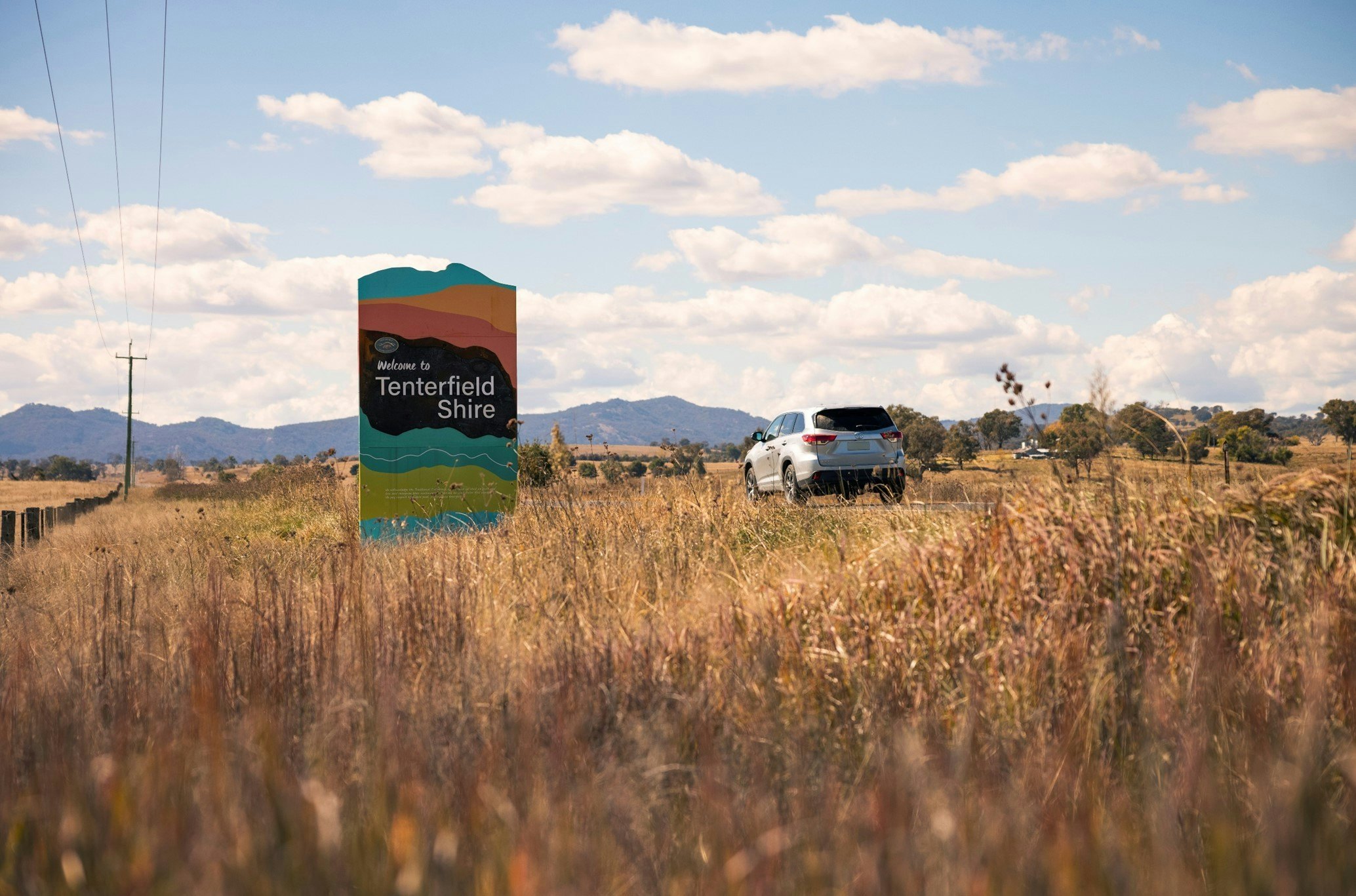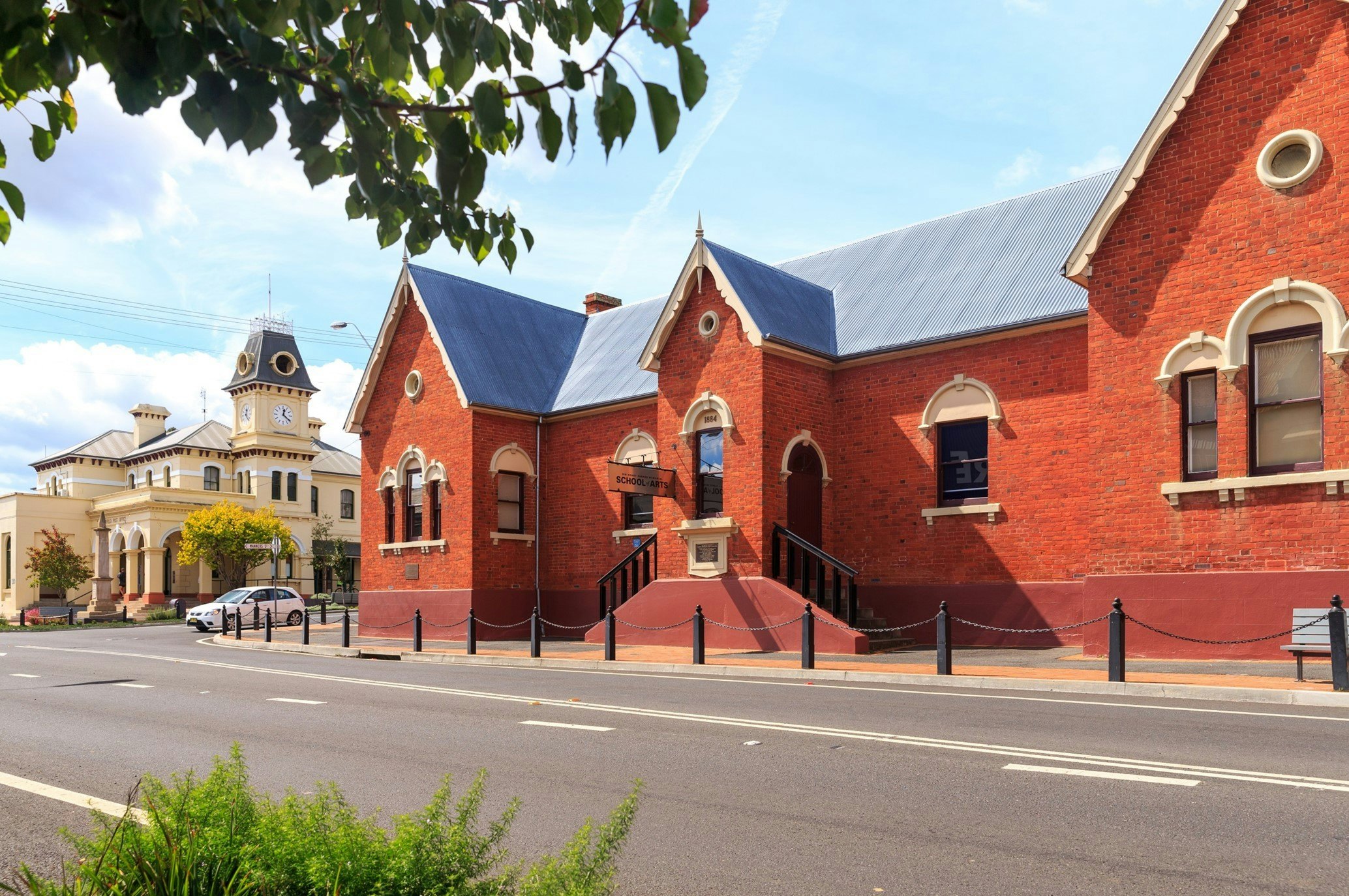About Tenterfield

Image | Destination NSW
Our Town
Located at the intersection of the New England and Bruxner Highways, Tenterfield is situated in the northern part of the New England Tablelands of New South Wales and lies just 20km south of the Queensland border.
Sitting astride the Great Dividing Range, the area features extraordinarily diverse and spectacular natural beauty and is gifted with great swathes of World Heritage listed national park wilderness, ranging from lush subtropical rainforest to stark, towering monolithic granite boulders illustrating the region’s turbulent volcanic past.
Tenterfield Shire spans 7,333 square kms and is home to an estimated 6,798 residents (2021 Census), with a median age of 47 years - 81 per cent of residents were born in Australia and the majority claim Australian, English, Irish or Scottish ancestry.
Tenterfield (pop. 2,828) is surrounded by the villages of Drake, Jennings, Legume, Liston, Torrington and Urbenville, each with their own unique character and history. The economy is largely based on agriculture, most significantly cattle and sheep farming and cropping, plus a steadily growing number of horticultural and intensive livestock industries. There is an emerging food and wine industry locally, with a great variety of cool climate wines being produced.
Tenterfield has a mild, blue-sky spring with a moderate, alpine summer climate (14°C – 28°C) followed by a fresh autumn when the many deciduous trees flame red and gold. The winters (0°C – 14°C) combine warm sunny days with crisp nights and frosty mornings.
You’ll be spoilt for choice when dining in the Tenterfield region! From welcoming local pubs and a thriving, cosmopolitan café culture, to international cuisine options and fine-dining venues… all renowned for their quality service, country hospitality and outstanding array of local produce lovingly grown right on the doorstep.
Our History
Tenterfield has a rich and fascinating history encompassing the sacred sites and ancient stories of the Traditional Owners, to the first European settlers of the region and the many notable residents who have called Tenterfield home.
Bundjalung, Jukembal (Yukambul) and Kamilaroi peoples inhabited the land now known as Tenterfield Shire for thousands of years. One of the area’s most famous landmarks, Bald Rock, served as neutral ground for the three Nations and was considered a boundary so trade could occur on the site without each Nation needing to travel through the other territories. The Githabul people lived in the northern part of the Shire, straddling the New South Wales/Queensland border and the Ngoorabul/Ngarabal people are the traditional owners of the Glen Innes Highlands area.
The area has many significant sites in the region including bora rings, scar trees, Woollool Woolloolni and Bluff Rock. A collection of fascinating artefacts can be seen at the Sir Henry Parkes Memorial School of Arts Museum, including stone axe heads, grinding implements, boomerangs, clubs, shield and spear thrower and a fire drill set. For further information on the First Nations’ history of the area, visit www.visittenterfield.com.au/things-to-do/history-heritage/history-of-tenterfield/indigenous-history
European settlers arrived in the area in the late 1830’s, with the first premier of NSW, Sir Stuart Donaldson establishing Tenterfield Station (running 18,000 head of sheep) as early as 1841 and marking the start of a prosperous agricultural future for the region. Ten years later, Tenterfield was gazetted as a town, then gold fever struck the town in 1858, when the precious metal was discovered at nearby Drake and shortly after at Timbarra and Boonoo Boonoo.
Captain Thunderbolt, the last of the NSW bushrangers and the longest roaming bushranger in Australia’s history was very familiar with the Tenterfield region in the 1860’s, using local caves and rock shelters as both a hideout and a favoured hunting ground for his hold-ups.
The Great Northern Railway was built in 1886, with Tenterfield originally earmarked as the junction for the NSW and QLD rail lines, however inter-colonial politics lead to the establishment of a new township and station in 1888 (Wallangarra) on the Queensland side of the border, creating a pivotal link between Sydney and Brisbane.
Tenterfield is known as the ‘Birthplace of our Nation’, with Sir Henry Parkes delivering his famous Federation Speech in the Tenterfield School of Arts in 1889. This milestone moment ultimately led to the Federation of all Australian States in 1901, making the town one of the country’s most significant historical sites.
One of Australia’s most famous writers and poets, Banjo Patterson also lived in Tenterfield for a short time in the early 1900s, proposing to his sweetheart, Alice Walker at the beautiful Boonoo Boonoo Falls lookout in in 1903.
During World War II, up to 10,000 troops were stationed in Tenterfield and surrounds. Many soldiers had returned from the Middle East, were trained at the nearby London Bridge Army Camp in jungle warfare and then were sent to fight in New Guinea and the Pacific.
Australian singer and songwriter, Peter Allen (1944 – 1992) put the town in the global spotlight with a moving tribute to his grandfather, creating one of his most beloved songs, Tenterfield Saddler. Fans from all over the world still make the pilgrimage to visit the historic Saddlery where the song was set.

Image | Destination NSW